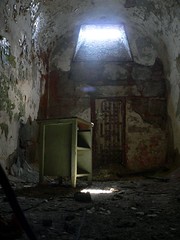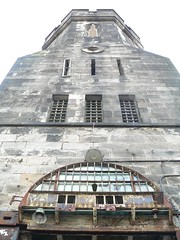"He [Burt Rutan] likened NASA’s efforts to archeology.”
- author Leonard Spitzer, Space.com
How exactly do you compare NASA to archaeology?
The context of this quote is Burt Rutan, head of California based, Scaled Composites, a privately funded space exploration design and construction firm, commenting on the current state of technology at NASA’s Crew Exploration Vehicle project. This project is the key to NASA’s moon and mars initiatives as outlined by President Bush’s “Vision for Space Exploration.” As stated by Rutan, the comparison to archaeology follows that:
“They [NASA] are forcing the program to be done with technology that we already know works. They are not creating an environment where it is possible to have a breakthrough … It doesn’t make sense,” Following this, Rutan argued that the NASA program needs to take risks in order to come upon a breakthrough.”
Now, unless Rutan is experienced in the world of Cultural Resource Management (CRM), the comparison is a bit foggy. Perhaps he is saying that NASA is using old stuff, archaeologists like old stuff, therefore NASA is like archaeologists. That interpretation seems a bit weak for a rocket scientist like Rutan.
I would like to think that the comparison is a good bit deeper and quite accurate from my perspective of working in the CRM industry. As with NASA, most of the work I do for a CRM company is funded, in one way or another, by a government agency. Also, as is the case with NASA, funding dictates the degree to which technology and innovation can be brought into a project. So as Rutan said, the perceived risk of loosing money to technology stifles new breakthroughs and in the end, costs more money.
Although I do get to work on some very cool and techy projects, in CRM in general, there is a lack of technological applications. Don’t get me wrong, technology is applied in some very cool ways and by very smart people, but the run of the mill phaseI/II investigation, which a huge portion of projects are, are relatively devoid of technology more recent than the trowel and shovel.
“So what” you say, the trowel and shovel work just fine and get the job done. I agree, but the point is, try and step out of the box and chances are you will be shot down. Whereas archaeology will always need the shovel and trowel, usually as a precursor to a bulldozer and grader, there is a host of technology that can work with the process to make the end product more accessible, accurate, and cheaper.
A creative environment is a hard thing to fund is CRM. The trickle down of process and methodology from the academy is a good, but implementing is in a quick and cost effective way, quickly and cost effectively, can be a challenge. I’m sure NASA faces many of the same hurdles. If this is what Rutan meant, then I whole heartedly agree.
Whereas Rutan said he would not want NASA Chief, Mike Griffin’s job of making President Bush’s space vision work give “only pennies to do it.” As an archaeologist in CRM, I truly enjoy the challenge.



 cell block 7, with nothing but 100ft of courtyard, and a 30 foot wall between it and the outside. Clarence Klinedinst (aka Kliney), began to dig, at first by himself then later with a cell mate, into the wall and straight down to the sand sediment below. Once Kliney was into the wall and through the footer, there were no obstructions until he would encounter the 12 foot deep base of the prison wall.
cell block 7, with nothing but 100ft of courtyard, and a 30 foot wall between it and the outside. Clarence Klinedinst (aka Kliney), began to dig, at first by himself then later with a cell mate, into the wall and straight down to the sand sediment below. Once Kliney was into the wall and through the footer, there were no obstructions until he would encounter the 12 foot deep base of the prison wall.


